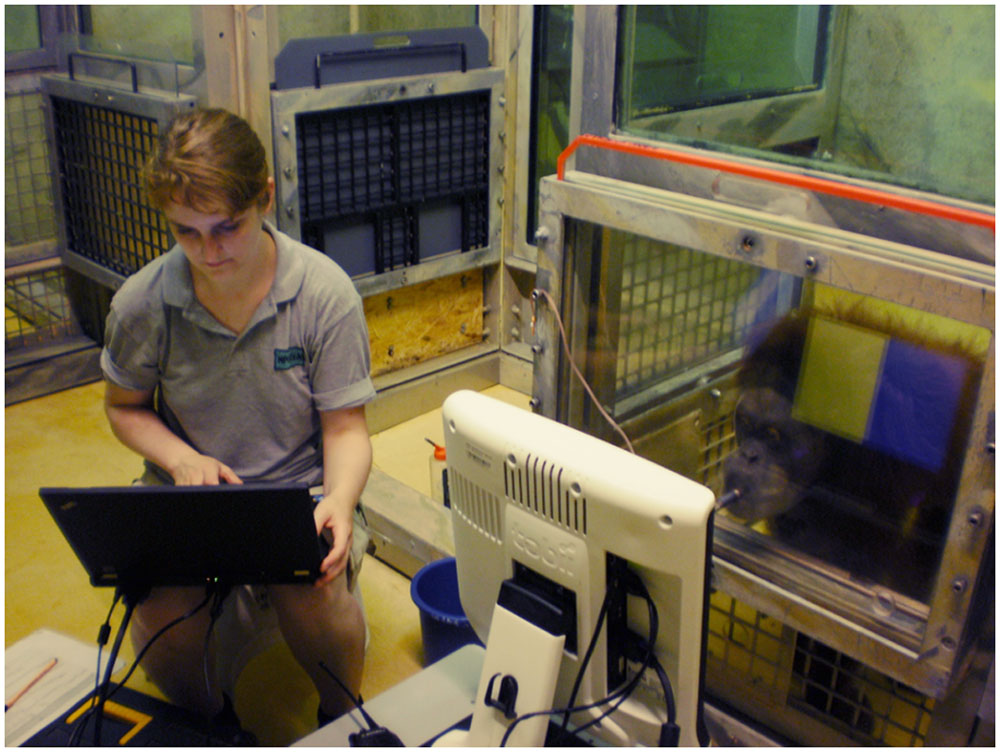Authors: Cordelia Mühlenbeck, Thomas Jacobsen, Carla Pritsch and Katja Liebal
Abstract
Objects from the Middle Paleolithic period colored with ochre and marked with incisions represent the beginning of non-utilitarian object manipulation in different species of the Homo genus. To investigate the visual effects caused by these markings, we compared humans who have different cultural backgrounds (Namibian hunter–gatherers and German city dwellers) to one species of non-human great apes (orangutans) with respect to their perceptions of markings on objects. We used eye-tracking to analyze their fixation patterns and the durations of their fixations on marked and unmarked stones and sticks. In an additional test, humans evaluated the objects regarding their aesthetic preferences. Our hypotheses were that colorful markings help an individual to structure the surrounding world by making certain features of the environment salient, and that aesthetic appreciation should be associated with this structuring. Our results showed that humans fixated on the marked objects longer and used them in the structural processing of the objects and their background, but did not consistently report finding them more beautiful. Orangutans, in contrast, did not distinguish between object and background in their visual processing and did not clearly fixate longer on the markings. Our results suggest that marking behavior is characteristic for humans and evolved as an attention-directing rather than aesthetic benefit.
Dieser Artikel ist erschienen in: Mühlenbeck C., Jacobsen T., Pritsch C. and Liebal K. (2017) Cultural and Species Differences in Gazing Patterns for Marked and Decorated Objects: A Comparative Eye-Tracking Study. Front. Psychol. 8:6. doi: 10.3389/fpsyg.2017.00006. Um den Artikel zu zitieren, nutzen Sie bitte diese Referenz. Den vollständigen Artikel erhalten Sie hier: marked and decorated objects.

Testing room in the WKPRC. An adult orangutan is looking at the eye tracker while drinking juice through a flexible tube attached to the plexiglass panel. The experimenter is operating the eye tracker via the laptop. Image credit: Cordelia Mühlenbeck.

Global heat map for hand axes (A) and sticks (B). Stimuli with the fixation points of all participants of all three groups. Green represents the German group, red the Namibian group and blue the orangutans. Contour lines indicate the density of the aggregated fixation duration of all participants. The size of the single gaze points represents their duration, with a larger size for a longer duration. The marked objects are surrounded with a red shadow and the unmarked objects with a blue shadow to improve their recognizability.